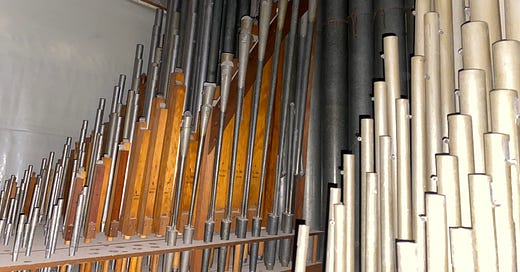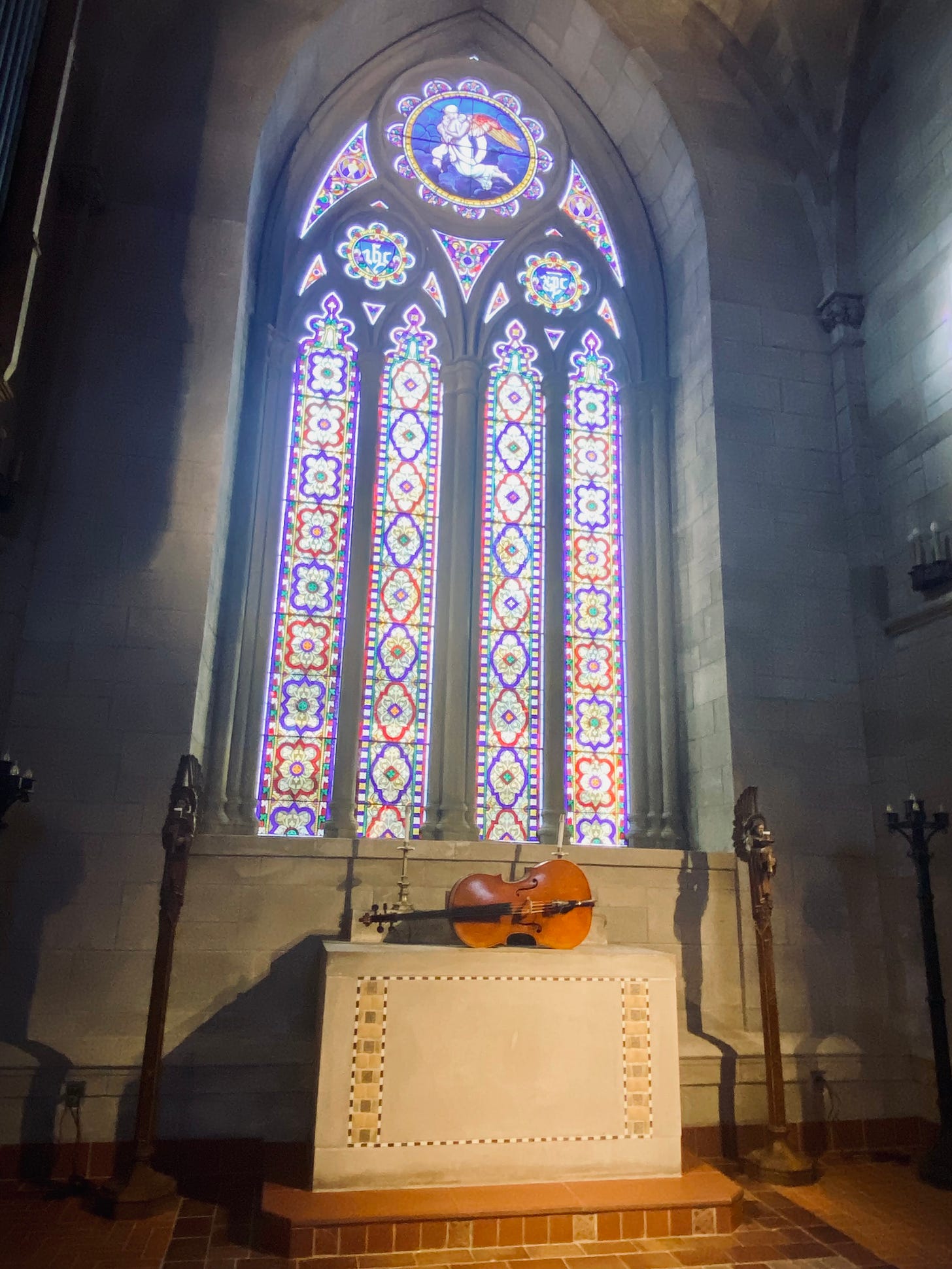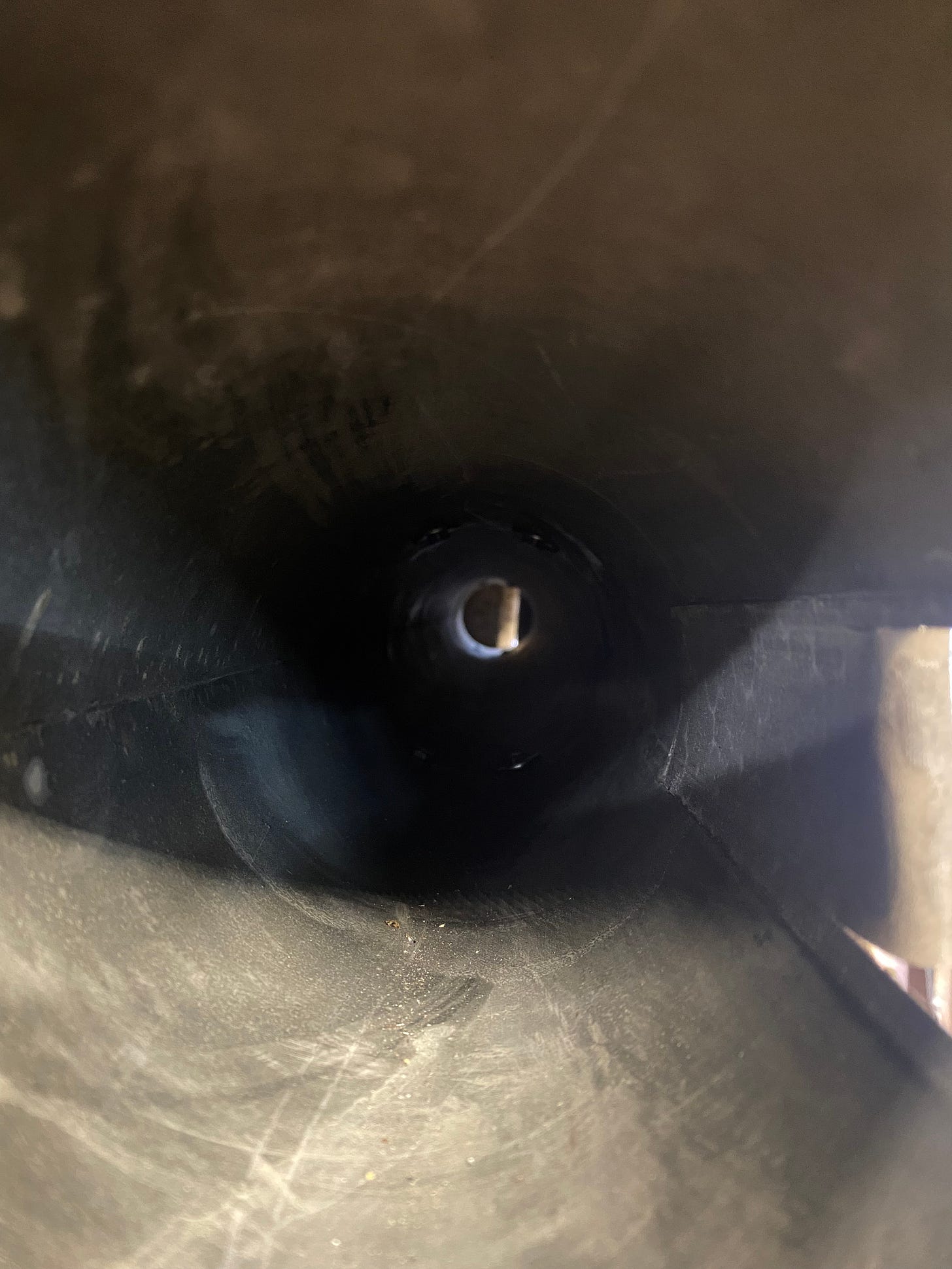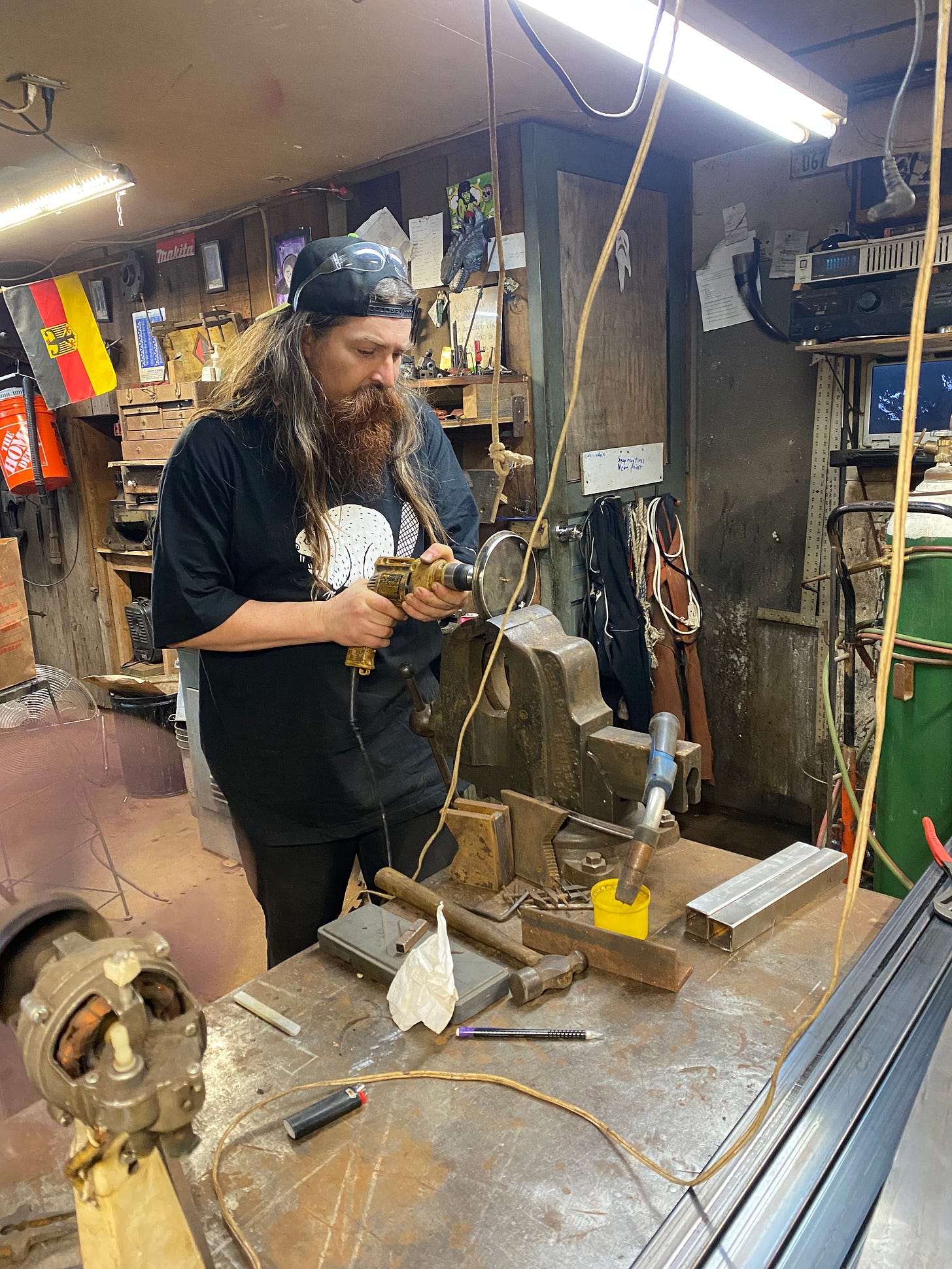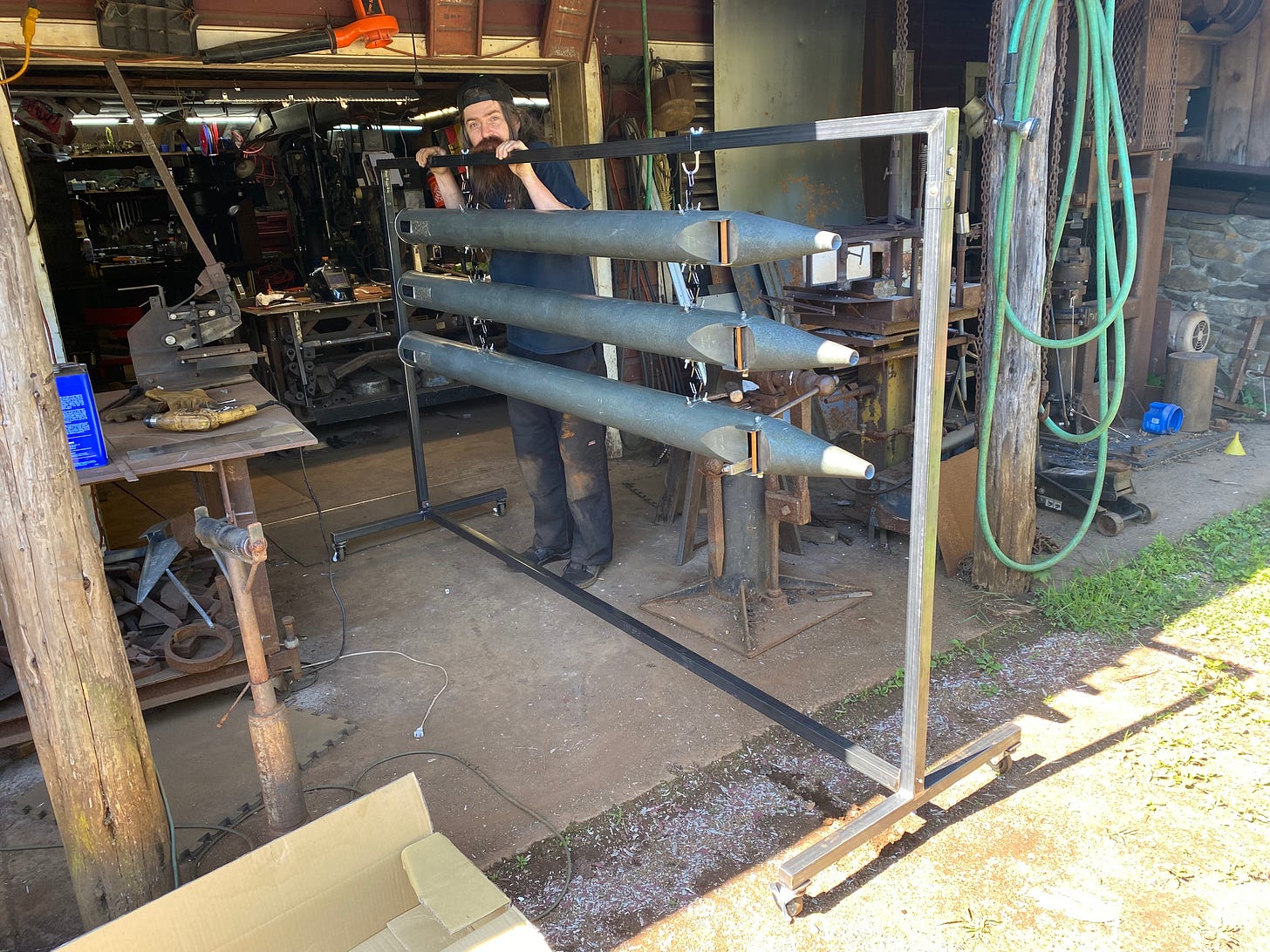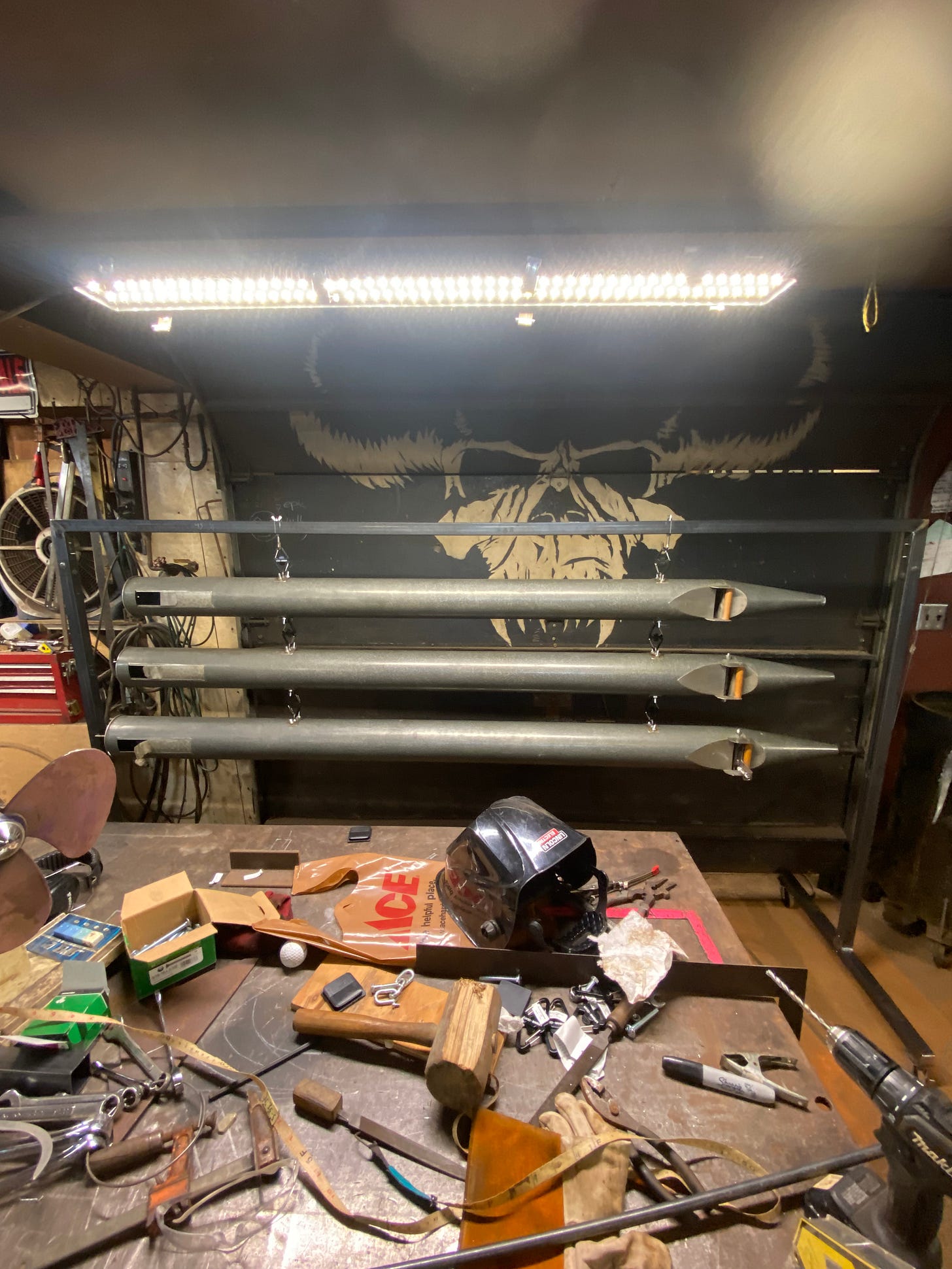The Mount Auburn Cemetery Organ Project
August 2023 update: Where it came from and how it's going
On the last unseasonably warm Friday in December, 2022, my friend Roy Hawes sent me an urgent message. The pipe organ his great-great grandfather had played in Bigelow Chapel at Mount Auburn Cemetery was going to be decommissioned, and he knew a composer just unhinged enough to save it from the dumpster. That unhinged composer, of course, was me.
At the time, I had not a whiff of what this potential organ pipe hoarding incident would become. It was one of those whims that either one goes after straight away, or faces the potential of living to regret forever.
So I dropped all my meetings for the rest of the day and off I scurried to Mount Auburn Cemetery’s striking gothic revival Bigelow Chapel to find the tiny organ room just adjacent to the new crematorium and just above the old crematorium. Roy, who handles everything(?) at the cemetery, graciously helped me load as many 19th century Scottish pipe organ pipes as would fit into my Subaru.
There were hundreds.
Over the course of the next month, I cleaned, tuned, and catalogued each of the pipes. As I heard the sounds of these pipes, observed their mechanisms, Googled furiously, knowing nothing of how a pipe organ actually worked, I started to gather ideas about what they could become.
A bit about Mount Auburn Cemetery
How to even begin, besides to tell you that you must go. Mount Auburn is one of the most hauntingly beautiful locations in the world. It is a transcendental dreamscape of obelisks, redwoods, warblers, colors, scents, and a pervading sense of impermanence that is paradoxically both overwhelming and comforting. For over a decade I’ve been getting lost there from time to time, composing, existing, re-remembering what it is to be a mortal animal. You must go.
Anyway.
I’m a 2023 artist-in-residence at the Lively Place!
Through Roy, I came to learn that the cemetery has an artist-in-residence program, so I applied, and lo and behold, I got in. A new sub-community is formed – over the next year or so, 7 local artists of different backgrounds will engage in dialogue and mutual inspiration. When I met these humans, I felt an immediate kinship.
Here was the community of death-positive artists I had been wanting for years – Those who look darkness in the face and laugh together, move through it together, and make.
Every single person I’ve met through Mount Auburn since my residency began has been a knowledge source. The Friends of Mount Auburn have allowed me the space intellectually, artistically, humanistically, and even financially for this instrument to become what it needs to be.
What do I do with all these pipes.
To fully restore a pipe organ is an undertaking to say the least. This was not an option for the cemetery or for myself, especially since each pipe incurred unique damage over the past couple of centuries. The tin alloy is warped and would need to be tuned too frequently to be of practical use in its original form. As devastating as it was for many members of the Mount Auburn community to retire the Bigelow Chapel pipe organ, it only made sense.
Years before I applied for my artist residency, I had become a fan of gamelan performances. Despite how it may appear to our orchestrally-influenced eyeballs, gamelan is a single instrument played by a group of people. The thought crossed my mind – what if repurposed organ pipes could comprise a multi-timbral grouping of instrument components?
And so the bad sketching began.
If it wasn’t going to be a pipe organ, it would have to become something else entirely.
In Spring, my longtime collaborator Ramon Castillo and I met over tea on Moody Street in Waltham. I brought my terrible drawings and dreams, and he gave me the most glorious brain dump on synthetic reverb, solenoids, control schemes, and so much more.
He’s always had a way of transforming a simple idea into a storm.
Within the first third of that matcha, Ramon helped me codify my plan and relayed a very, very important anecdote:
“Prototype like your life depends on it.”
August, 2023: Building Argent & Sable
As I write this, the instrument component currently under construction is to be named Argent & Sable. It consists of three 7ish-foot Principal organ pipes mounted horizontally in an 8-foot steel frame.
It will use audio exciters and piezoelectric pickups, turning the pipes into both speakers and noisemakers.
It can have sound played into the audio exciters and be reactive to that sound, and/or,
Be reactive to percussion on the outside of the pipes.
The idea was to create an instrument component that, like death, translates differently depending on the composer’s and performer’s perspectives.
I’ve never designed an instrument before now. It might not work and I’ll have to return to the bad drawing board. For me, the giant, messy thought experiment is half the fun.
The Iron Geist
On the weekend of August 1, I visited Willy Blass of Iron Geist Studios in Falls Village, Connecticut to witness the engineering of the world’s most complicated slinky apparatus.
Instead of building a spring from scratch, we sourced a literal slinky to use as the spring reverb. Because the apparatus he created at either end of the pipe is fully adjustable, the slinky/spring can be tightened, loosened, and replaced when the time comes. Theoretically, a slinky should sound quite ambient.
The steel sheet used for the plate reverb is also fully adjustable and replaceable. It can be pulled out of the pipe completely to have piezo pickups placed and moved within the chamber, and for general maintenance.
The top pipe is empty, but has end caps. It can be optionally filled with objects like beads and bones that when struck, will vibrate. Other pipes may or may not engage with those vibrations.
We blasted Sisters of Mercy, Nosferatu, Stravinsky, Danzig (and the rest of the classics) for upwards of 14 hours a day for 3 days straight as Willy forged together hundreds of mechanisms for the instrument using steel, heat, and at least a dozen bespoke machines, many of which he invented.
In the end, Willy was able to retain the original appearance of the Principal pipes while having the vast inner workings remain somewhat mysterious to listeners, like a pipe organ.
Learning What Argent & Sable Sounds Like
Over the next several weeks until the September 23 & 24 Mount Auburn Consecration Day music event in Hazel Dell (event link to come), I’ll be testing and installing the electronics, and finally actually composing for the Argent & Sable.
A really great book on Mount Auburn was gifted to all of the Artists-in-Residence at our opening reception. I came across a passage that resonated:
“Yes, I have walked alone, but I felt that going with others would serve to deepen and enrich my experience, and help me see things I was not equipped, or ready, to see. William James called the sensory overload that a baby confronts at birth an, ‘aboriginal sensible muchness.’ I needed help in focusing, in narrowing down, in noticing specifics in the richness.”
– The Lively Place by Stephen Kendrick, page 48
In response, the first piece that will be written for Argent & Sable + cello + voice is to be called Aboriginal Sensible Muchness. I’ll use composing this piece as a sound exploration, to allow the instrument to begin to become. Of course my human, subjective influence has no choice but to creep its tentacles into the process, but in an idealistic way, I wish for this first piece to write itself.
One must allow and be open to any and all possibilities…
In collaboration with the Friends of Mount Auburn

